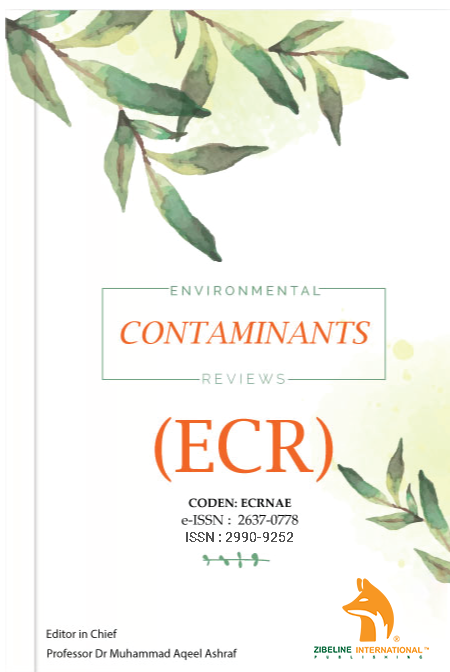
ASSESSMENT OF PESTICIDE CONTAMINANTS AND PHYSICOCHEMICAL QUALITY OF SELECTED NATURAL POND ECOSYSTEMS IN MAKURDI LGA BENUE STATE
Journal: Environmental Contaminants Reviews (ECR)
Author: Ikyurgen, A., Gberikon, G.M., Azua, E.T., Edinoh, D.O
This is an open access article distributed under the Creative Commons Attribution License CC BY 4.0, which permits unrestricted use, distribution, and reproduction in any medium, provided the original work is properly cited
Doi:10.26480/ecr.02.2025.46.50
ABSTRACT
Applications of pesticides in agricultural activities is on the increase in the study area. This study determined the physicochemical quality and pesticide profiling of selected natural pond ecosystems in Makurdi LGA Benue State. Water samples from four earthen ponds (Tyo Mun, Industrial layout, IdyeDogo, Aguba and North Core University of Agriculture Makurdi serving as control) were collected for physicochemical analysis pesticide profiling using HPLC. Results showed that the pond water pH values ranged from 7.80 to 8.78. Tyo-mu pond had the highest TDS (290ppm) while Industrial layout pond had the lowest (26ppm). The EC level was between (52 μmohs/cm and 590 μmohs/cm. The dissolved oxygen (DO) concentration ranged between 2.90 to 4.30. Biochemical oxygen demand BOD was low. The nitrate levels in the water samples ranged between 0.01 and 0.11 mg/L, while phosphate concentrations varied from 0 to 1.2 mg/L. Pesticide analysis indicated that Pendio Carb was absent in all samples. Propoxur residues in the water were found at levels ranging from below the detection limit up to 0.97 mg/L. It can be inferred that the water from five ponds and one earth dam contained no detectable pesticide residues, although estimated concentrations remained within acceptable limits. The levels of Pendio Carb, Permethrin, and Propoxur were all below the established maximum residue limits (MRLs), which accounts for the acceptable values observed in the physicochemical properties. Nevertheless, the findings highlight the need for regulatory agencies to enforce monitoring and control measures to prevent pesticide misuse in the area.
KEYWORDS
Pond water, pesticide contaminant, physicochemical analysis

